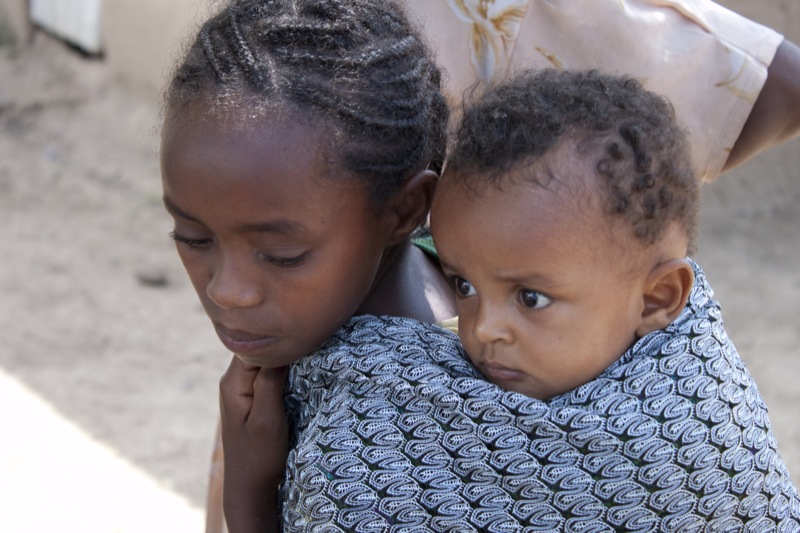Unearthing the Challenge: Child Poverty in Sub-Saharan Africa

In the modern world, few countries suffer as harshly as those in sub-Saharan Africa when it comes to child poverty. Per a 2023 UNICEF-World Bank Report, more than 40% of children in sub-Saharan Africa live below the extreme poverty line, i.e., living on less than $2.15 a day, accounting for more than 70% of the children living in poverty worldwide.
Despite every effort at the international level, epitomized by the United Nations’ promise to end extreme child poverty by 2030 in their Sustainable Development Goals (SDGs) initiative, sub-Saharan Africa’s share of the world’s children in poverty rose from 54.8% in 2013 to 71.1% in 2022. The focus of this article is to decipher the key driving factors influencing this crisis, illustrate the extent of the issue and its impact on children in sub-Saharan Africa and discuss the actions taken to stifle it from the ground level up.
A Multifaceted Conundrum: The Key Factors at Play
Child poverty in this region is not a singular problem but a multifaceted challenge rooted in historical, economic, social and political contexts. The consequences of such have left local communities with limited access to effective means of health care, education and basic services, facilitating an insurmountable cycle of poverty. Corruption, unstable governance and conflict in some regions of sub-Saharan Africa hinder economic development and divert resources away from poverty-alleviation efforts, with the UNICEF report estimating one in three children in conflict-torn states living in extreme poverty compared to one in 10 in non-fragile states.
High levels of unemployment and underemployment, coupled with a largely informal economy, mean that many families struggle to earn a reliable income. Climate shocks are one of the leading factors for concern, with data suggesting at least 1.85 million children were displaced from their homes by the end of 2022 due to natural disasters, up from only 1 million in 2021. But a primary component fuelling this child poverty crisis in sub-Saharan Africa is rapid population growth and inadequate access to family planning further strains the already limited resources of family households.
Innocence Lost: The Devastating Consequences of Child Poverty
The effects of poverty are most damaging for children, hindering their social development and education and potentially their physical, emotional and cognitive well-being. Deprived of sufficient provisions in health care, education and often shelter and dietary needs, the likelihood of a reasonable upbringing is scarce. Limited nutrients can lead to malnutrition and stunted growth. Underdeveloped shelter leads to exposure to environmental hazards and increases the risk of illness. Children subject to poverty will typically see limited career opportunities and be subject to manipulation from criminal groups. This likelihood only further fuels poverty’s perpetual cycle by impeding intellectual development that would otherwise seed the basis for reform and development.
Hope in Action: A Look Into Poverty Relief Efforts
Child poverty in sub-Saharan Africa is a multifaceted issue, demanding a versatile approach to relief. Various NGOs, government bodies and IGOs are investing considerable time, resources and work into relief efforts, exemplified by the Irish Government’s Official Development Aid (ODA) initiative that has surmounted more than €1.233 billion in provisions for 2023 — noting a particular focus on Sub-Saharan Africa.
There are countless international initiatives pushing to overcome these crises, such as Feed the Future, and spurring economic growth in states such as Malawi, Ethiopia, Kenya and more. In Fiscal Year 2021, “USAID and the U.S. Department of State provided $8.5 billion of assistance to 47 countries and eight regional programs in sub-Saharan Africa.” In addition to this aid, the IMF has reported providing more than $50 billion between 2020 and 2022 while maintaining lending relationships with 21 Sub-Saharan African countries as of March 2023.
However, despite considerable investment from foreign aid, economic growth is expected to slow to 3.6% — below the global recovery rate. According to an IMF report, foreign aid accounts for just 2.5% of Sub-Saharan Africa’s GDP, down from 4% in the early 2000s due to the continued trimming of Western aid budgets. With the ongoing crisis in Ukraine and regular natural disasters causing panic, as seen in Morocco and Libya, conditions are unlikely to improve anytime soon.
Addressing child poverty is not only a moral imperative but also an investment in a more equitable and prosperous future for societies where every child has the chance to thrive.
– Ruairí Greene
Photo: Flickr
